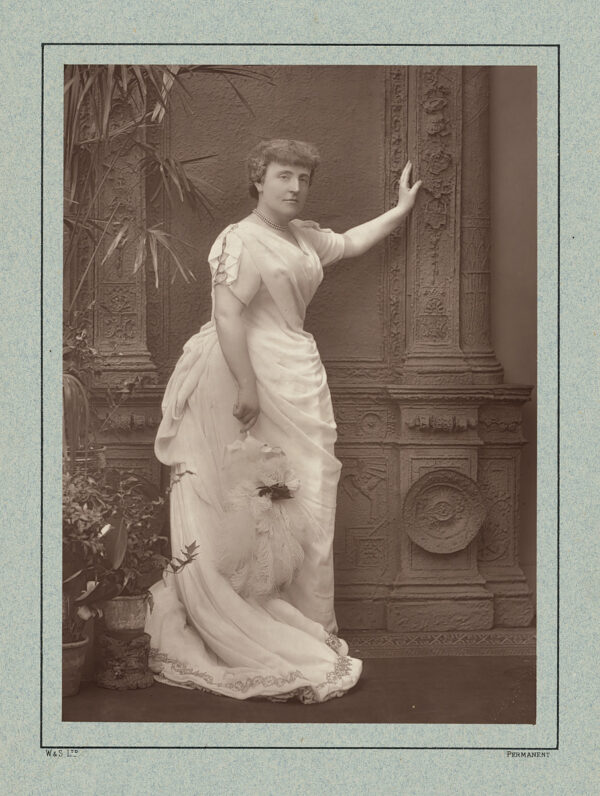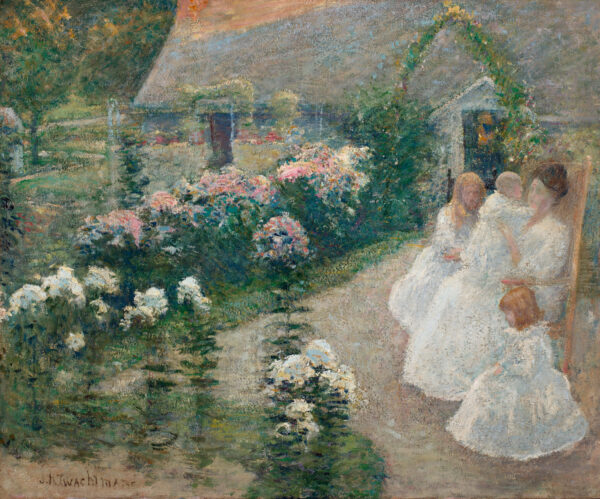Learning Mamas–and Beware of Muddled Theology
Frances Eliza Hodgson was born in England in 1849. Her father died when she was five years old. Her mother Eliza struggled to provide for Frances and her four siblings, so she decided to emigrate to America. In 1865 they settled in New Market, Tennessee, so that they could be near Eliza’s brother, who owned a store in nearby Knoxville.
As a teenager, Frances enjoyed writing stories. The popular magazine Godey’s Lady’s Book published her story, “Hearts and Diamonds,” just three years after she arrived in America. She was 18 years old. In 1873, at age 24, Frances married Dr. Swan Moses Burnett, an ear and eye specialist from New Market.
Frances Hodgson Burnett became a prolific American novelist who lived in various places, including Washington, D.C. She crossed the Atlantic Ocean 33 times and often wrote about the land of her birth. She wrote dozens of books for adults, but she is remembered mainly for her books for children, including The Secret Garden, published in 1911.

The Secret Garden is the story of Mary, a little girl born in India to English parents. Mary’s mother never wanted her and paid her no attention, leaving her to the care of an Indian servant. Her father stayed busy doing his work for the English government and was often ill. After both of her parents died during a cholera epidemic, Mary went to live with an uncle in England.
There Mary was befriended by one of her uncle’s servants, the housemaid Martha. When Martha went home once a month to visit her family, she told them stories about Mary.
Martha was one of twelve children. Her mother was a kind woman whose motherly heart went out to the strange little orphan. Though she knew Mary only through her daughter Martha’s stories, she began trying to help her. Once she bought Mary a jump rope out of her very meager funds, believing it would improve Mary’s health.
One day Mary and Martha had a conversation which I think you will enjoy. At this point in the story, Mary has lived for a few weeks in her uncle’s enormous house but she has not even met him yet. He spends very little time at home. Thus far he has left instructions for his servants to care for Mary’s physical needs, but he has not addressed any of her educational or emotional ones.
Here is the conversation:
“This is such a big lonely place,” [Mary] said slowly, as if she were turning matters over in her mind. “The house is lonely, and the park is lonely, and the gardens are lonely. So many places seem shut up. I never did many things in India, but there were more people to look at—natives and soldiers marching by—and sometimes bands playing, and my Ayah [governess] told me stories. There is no one to talk to here except you and Ben Weatherstaff [the gardener]. And you have to do your work and Ben Weatherstaff won’t speak to me often. I thought if I had a little spade I could dig somewhere as he does, and I might make a little garden if he would give me some seeds.”
Martha’s face quite lighted up.
“There now!” she exclaimed, “if that wasn’t one of th’ things mother said. She says, ‘There’s such a lot o’ room in that big place, why don’t they give her a bit for herself, even if she doesn’t plant nothin’ but parsley an’ radishes? She’d dig an’ rake away an’ be right down happy over it.’ Them was the very words she said.”
“Were they?” said Mary. “How many things she knows, doesn’t she?”
“Eh!” said Martha. “It’s like she says: ‘A woman as brings up twelve children learns something besides her A B C. Children’s as good as ’rithmetic to set you findin’ out things.’”
It’s true, isn’t it? Children’s as good as ’rithmetic to set you findin’ out things. That was true from the time I became the mother of our firstborn. The truth of it expanded tremendously after we began to homeschool.

So, as your children enjoy learning their lessons today, I hope you enjoy learning yours, too — even if no part of your day looks anything at all like the painting above.
I just finished The Secret Garden for the first time. I loved so many things about this book, but was very sad when I got near the end. The theology is a muddle. On the one hand, I was thrilled when the children sang the Doxology (written in 1674 by Church of England clergyman Thomas Ken):
Praise God, from whom all blessings flow;
Praise Him, all creatures here below;
Praise Him above, ye heav’nly host;
Praise Father, Son, and Holy Ghost.
Amen.
However, I was so disappointed when an adult the children respected showed little respect for the church. Near the end of the book, God and white magic and a sort of force for good in the universe get all muddled together. The mother I quoted above even says that she doesn’t think that force for good cares what you call it. I disagree. I believe that God cares very much that we recognize and confess Our Father in heaven as the all-powerful God of the universe.
For there is one God,
and one mediator also between God and mankind,
the man Christ Jesus,
who gave Himself as a ransom for all,
the testimony given at the proper time.
1 Timothy 2:5-6
When I told my wise husband, Ray—who knows the Bible and history so well—what I thought about the book when I finished it last night, he said, “Sounds very 1911-ish.” Sigh. Sounds very 2022-ish, too.
I still believe that “Children’s as good as ’rithmetic to set you findin’ out things.” I just wish I could rewrite several passages in The Secret Garden to give God the credit for what He does every day in the world and in our individual lives.
The mind of the discerning acquires knowledge,
And the ear of the wise seeks knowledge.
Proverbs 18:15

